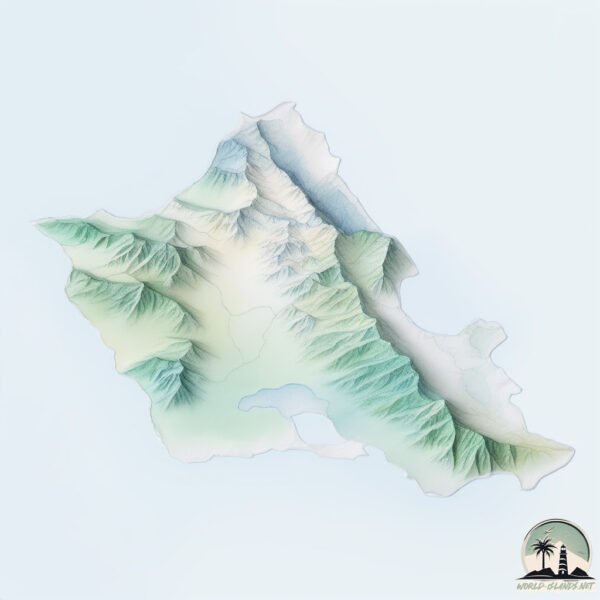Oahu

Welcome to Oahu, a Tropical island in the North Pacific Ocean, part of the majestic Pacific Ocean. This guide offers a comprehensive overview of what makes Oahu unique – from its geography and climate to its population, infrastructure, and beyond. Dive into the details:
- Geography and Size: Explore the island’s size and location.
- Climate and Weather: Weather patterns and temperature.
- Topography and Nature: Uncover the natural wonders of the island.
- Infrastructure and Travelling: Insights on reaching, staying, and making the most of your visit.
- News and Headlines: Latest News.
Geography and size of Oahu
Size: 1560 km²
Coastline: 322 km
Ocean: Pacific Ocean
Sea: North Pacific Ocean
Continent: Oceania
Oahu is a Very Large Island spanning 1560 km² with a coastline of 322 km.
Archipel: Polynesia – A region of more than 1,000 islands in the central and southern Pacific Ocean, known for their diverse Polynesian cultures, stunning landscapes, and marine biodiversity.
Tectonic Plate: Pacific – The world’s largest tectonic plate, covering much of the Pacific Ocean, known for the Pacific Ring of Fire with extensive seismic and volcanic activity.
The geographic heart of the island is pinpointed at these coordinates:
Latitude: 21.45898298 / Longitude: -157.97359667
Climate and weather of Oahu
Climate Zone: Tropical
Climate Details: Tropical Savanna, Wet
Temperature: Hot
Climate Characteristics: Defined by distinct wet and dry seasons with high temperatures year-round. Pronounced rainfall occurs during the wet season, while the dry season is marked by drought.
Topography and nature of Oahu
Timezone: UTC-10:00
Timezone places: Pacific/Honolulu
Max. Elevation: 1160 m
Mean Elevation: 222 m
Vegetation: Evergreen Broadleaf Forest
Tree Coverage: 42%
The mean elevation is 222 m. The highest elevation on the island reaches approximately 1160 meters above sea level. The island is characterized by Plateau: Elevated flatlands rising sharply above the surrounding area, with a maximum elevation over 500 meters but a mean elevation less than 300 meters, forming unique highland areas on islands.
Dominating Vegetation: Evergreen Broadleaf Forest
Characterized by dense, lush canopies of broadleaf trees that retain their leaves year-round. These forests are typically found in tropical and subtropical regions and are known for their high biodiversity. Oahu has a tree cover of 42 %.
Vegetation: 15 vegetation zones – Exceptionally Diverse Island
Islands with more than ten vegetation zones are among the most ecologically rich and varied in the world. These islands are akin to miniature continents, boasting an incredible array of ecosystems. The sheer range of habitats, from high peaks to deep valleys, rainforests to deserts, creates a mosaic of life that is unparalleled. They are crucial for conservation and ecological studies.
Infrastructure and Travelling to Oahu
Does the island have a public airport? yes.
Oahu has a public and scheduled airport. The following airports are located on this island: Daniel K Inouye International Airport.
Does the island have a major port? yes.
Oahu is home to a major port. The following ports are situated on the island: BARBER’S POINT, HONOLULU.
The mean population of Oahu is 677 per km². Oahu is Densely Populated. The island belongs to United States of America.
The name of the island resonates across different cultures and languages. Here is how it is known around the world: Arabic: أواهو، هاواي; Spanish: Oahu; French: Oahu; Portuguese: Oahu; Russian: Оаху; Chinese: 歐胡島
Continuing your journey, Molokai is the next notable island, situated merely km away.
United States of America is classified as Developed region: G7: Group of Seven – Major advanced economies, including Canada, France, Germany, Italy, Japan, the United Kingdom, and the United States. The level of income is High income: OECD.
News – Latest Updates and Headlines from Oahu
Stay informed with the most recent news and important headlines from Oahu. Here’s a roundup of the latest developments.
Social Media Posts about Oahu
Please note: The data used here has been primarily extracted from satellite readings. Deviations from exact values may occur, particularly regarding the height of elevations and population density. Land area and coastline measurements refer to average values at mean high tide.
